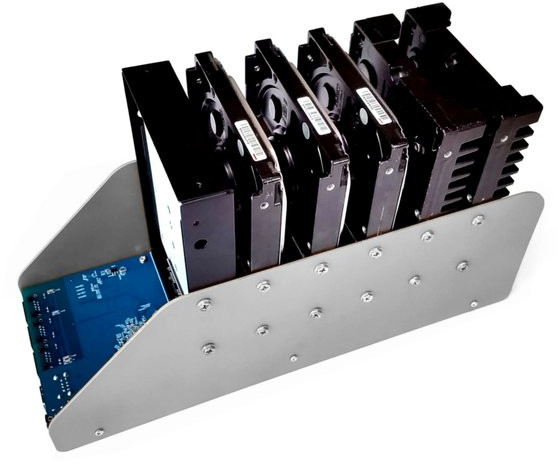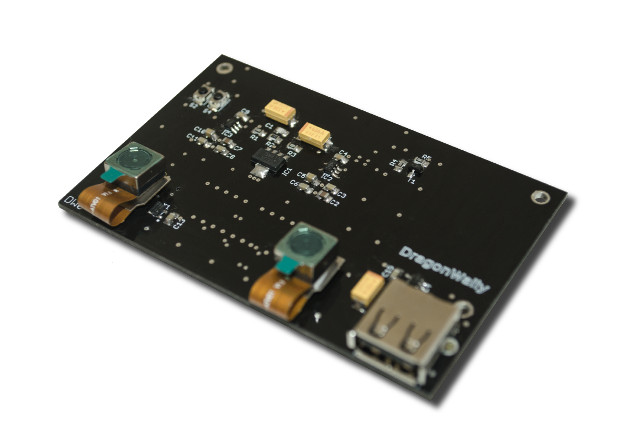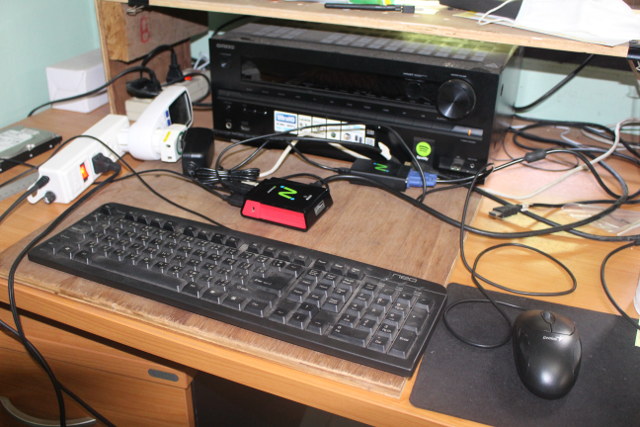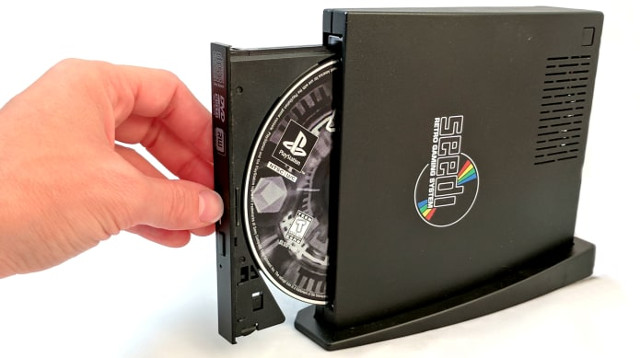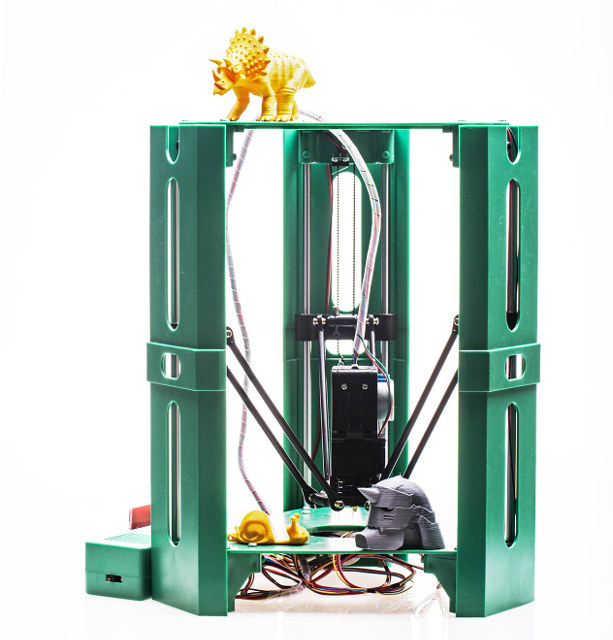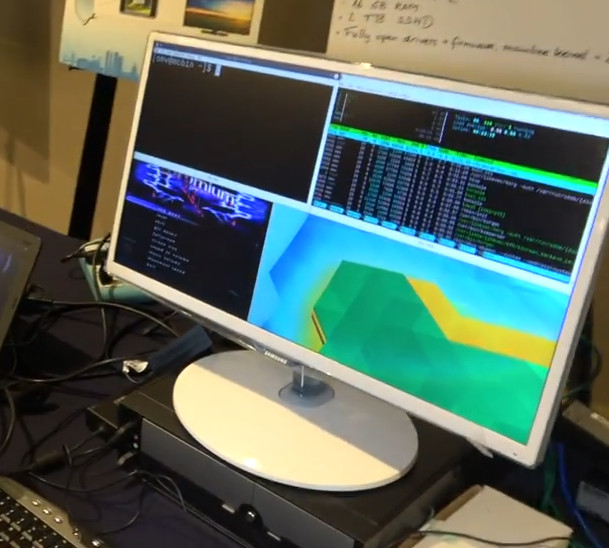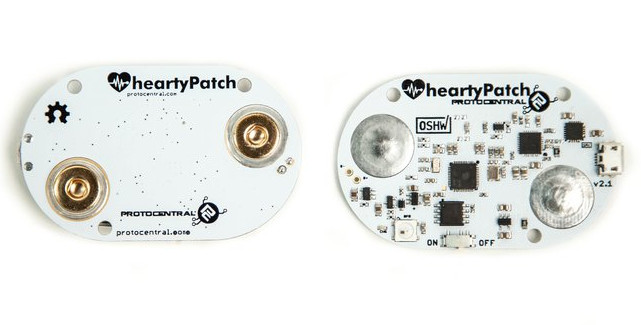GNUBee Personal Cloud 1 is a DIY NAS powered by Mediatek MT7621A MIPS processor that supports up to 2.5″ SATA drives, and runs free and open source software. It was first introduced in March of this year through a CrowdSupply campaign. The developers are now back with GNUBee Personal Cloud 2 (GB-PC2) with pretty much the same features, but instead of being designed for 2.5″ drives, it supports up to six 3.5″ drive that should offer either more capacity, or a lower total price for an equivalent capacity. GB-PC2 NAS specifications: Processor – MediaTek MT7621A dual core, quad thread MIPS processor @ 880 MHz, overclockable to 1.2 GHz System Memory – 512 MB DDR3 (max supported by MT7621) Storage – SD card slot tested up to 64 GB, 6x 3.5” SATA HDD or SSD (recommended RAID 0 or 1 under LVM, MD, or Linux MD RAID 10) Connectivity – 3x […]
Dragonwally is a Stereoscopic Computer Vision Mezzanine for 96Boards CE Boards
Hardware based on 96Boards specifications may not have the number of sales as Raspberry Pi or Orange Pi boards, but there’s heavily used by Linaro member and other developer working on bleeding edge software. More and more companies are designing boards compliant with the standard, and several new mezzanine expansion boards such as Secure96, were showcased at Linaro Connect SFO 2017, and are yet to be show up on 96Boards Mezzanine page. Another 96Boards mezzanine expansion board in development is Dragonwally, designed for stereoscopic computer vision, currently used with DragonBoard 410c board, and targetting applications such as object recognition, people counting, access control, or driver identification and safety. DragonWally DW0 board specifications: MIPI DSI interface with high speed connector 2x 5MP cameras 1x USB port 96Boards CE compliant The two Brazilian developers working on the project interfaced it with DragonBoard 410c running Linaro Debian, and using OpenCV and Python for […]
NComputing RX300 Thin Client Review – Part 2: Hardware Setup, Windows Server 2016
Ncomputing RX300 is a thin client based on Raspberry Pi 3 board, allowing to run Windows operating systems on a powerful server with the Raspberry Pi 3 handling the display, audio, and keyboard/mouse inputs. The company sent me a sample for review, and I checked out the hardware and accessories in the first part entitled “NComputing RX300 Thin Client Review – Part 1: Unboxing and Teardown“, so in the post I’ve started the thin client, and connected it to vSpace Pro server. Hardware Setup RX300 uses the same peripherals as any mini PC, so I connected USB keyboard and mouse, an Ethernet cable (WiFi is also possible), and the power adapter. You could also connect other devices, and I added a USB flash drive which, as we’ll see later, will be properly recognized by the server. I was also sent a USB to VGA adapter that you can connect to […]
Orange Pi Lite Based Seedi Retro Gaming Console Takes Your Old DVDs or CD-ROMs (Crowdfunding)
Shenzhen Xunlong’s Orange Pi family is a nice collection of low costs ARM Linux development boards that can be used in all sort of projects, just like Raspberry Pi boards, but cheaper at the cost of requiring more skills, and/or efforts to complete a project. One popular use for Orange Pi boards is retro gaming thanks to community supported images like RetrOrange Pi supporting games for Atari, Amiga, DreamCast, and other consoles. The implementation looks good enough for startups to sell their own products based on Orange Pi hardware and RetrOrangePi software, as we’ve already seen with RetroEngine Sigma Retro Game Console which had a very successful Indiegogo campaign with $629,368 USD raised. “Seedi Team” has now launched their own game console apparently based on Orange Pi Lite, but it’s a little different as instead of copying “ROMs” , you can simply insert your old CD-ROMs or DVDs. Seedi game […]
$99 101Hero PYLON is a Poor 3D Printer, But Could Prove Useful to Learning 3D Printing Technology
Anet A8 was one of the first sub $200 3D printer I found last last year, reviews were surprisingly positive. It is now sold for around $150 shipped (with A8PRINT coupon), and experienced reviewers often recommend it to people wanting to get started with 3D printing on a budget. But last week, as I browsed products on Banggood, I found something even cheaper with 101Hero PYLON 3D printer going for $107.99 shipped with coupon 349da5, and further research lead me to the official website where they sell it for $99 excluding shipping, and provide documentation and video tutorials. 101Hero PYLON 3D printer specifications: Printing technology – FDM (Fused deposition modeling) Host Material – Steel + ABS XYZ Bearings – Steel Print Size – 100 x 100mm Layer thickness – 0.1mm Nozzle diameter – 0.4mm Printing material – PLA Material Diameter – 1.75mm Power Supply – 20W Dimensions – 260 x […]
MACCHIATOBin based DIY ARM Desktop, DragonBoard 820c based DIY ARM Laptop (Video)
2017 may be the year of the (ARM based) Linux desktop, sort of. We’ve already seen GIGABYTE ARM development PC powered by a Socionext SC2A11 Synquacer 24-core ARM Cortex A53 processor that will be available in December, and apparently working fairly well already. But there are even more options, as Bernhard Rosenkränzer (Bero) from the Linaro Mobile Group, and unofficial Linaro superstar, has decided to create his own ARM based desktop and laptop, based on respectively MACCHIATOBin board with a Marvell ARMADA 8040 quad core Cortex A72 processor, and DragonBoard 820c board with a Qualcomm Snapdragon 820 quad core Krait processor. Since MACCHIATOBin board complies with mini-ITX form factor, he could simply use off the shelf parts with a standard desktop case with power supply, NVIDIA or AMD Radeon graphics card, 16GB memory modules, and a 2 TB SSD drive. The AMD Radeon card fried due to overheating, so the […]
HeartyPatch is an Open Source Wireless ECG Patch Powered by ESP32 WiSoC (Crowdfunding)
Smart health gadgets will soon have a bigger part to play in our lives, especially for health monitoring. It mainly started with fitness trackers, but now we are starting to see connected devices such as blood pressure monitors, including the upcoming watch like Omron HeartVue, thermometer, scales, vital sign monitoring systems, certified medical SBC‘s to allow engineers to developer their own medical applications, and even open source surgical robots. HeartPatch is one of those medical board that specifically aims at measuring ECG data, and sent it over Bluetooth or WiFi thanks to Espressif ESP32 WiSoC. HeartPatch specifications: SoC – Espressif Systems ESP32 dual core Tensilica LX6 processor with Wi-Fi/Bluetooth ECG Chip – Maxim MAX30003 analog front-end USB – 1x micro USB connector for programming, data, power, and battery charging Debugging – USB-UART bridge based on CP2104 Misc – Onboard Snap-on Buttons for disposable electrode pads, RGB LED, Battery – 450 […]
Sonoff B1 Smart Light Bulb Review – Part 1 : eWeLink Android App and Teardown
ITEAD Studio has a popular family of home automation devices call Sonoff with WiFi switches, smart sockets, RF to WiFi bridges and so on. All WiFi devices are based on Espressif ESP8266 or ESP8285, and while the company provide a stock firmware working with eWelink app, at least two communities have formed around Sonoff and other similar devices providing two open source firmware alternatives: ESPurna and Sonoff-Tasmota. The company has sent me Sonoff B1 smart RGB light bulb for review. Today, I’ll check out the light with eWelink app for Android, and do a teardown, before trying one of the open source firmware in the second part of the review. Sonoff B1 Unboxing Some Chinese products come in a blank cardboard boxes, but Sonoff’s light bulb comes with in a nice looking retail package that would look good on store’s shelves. One of the side lists the specifications with an […]


